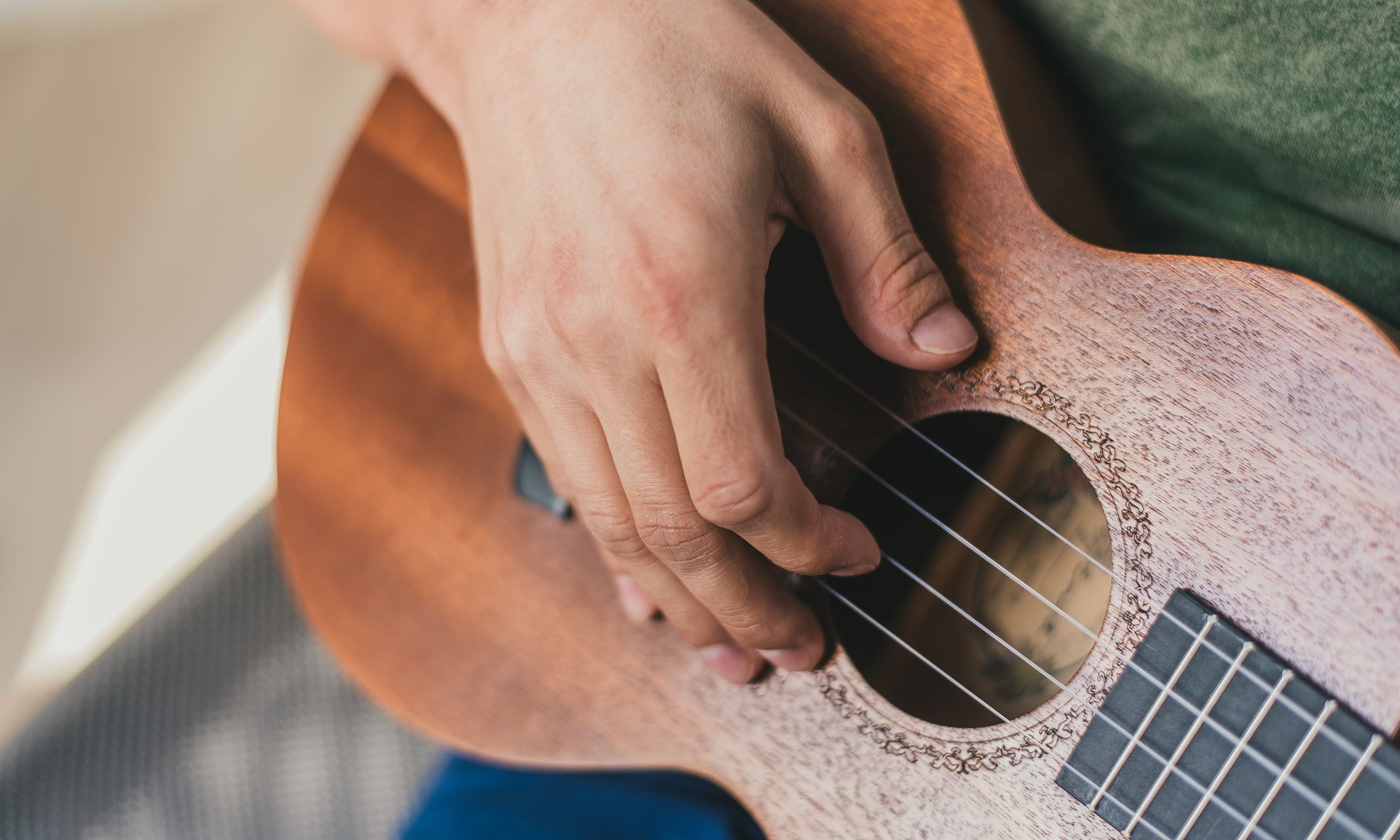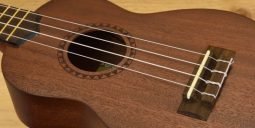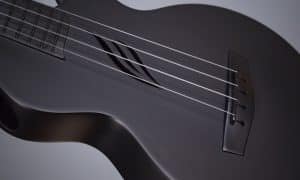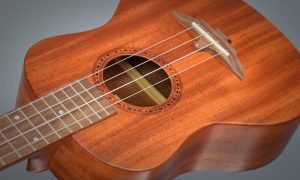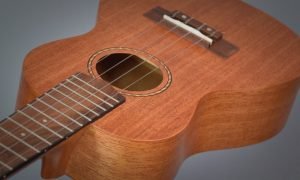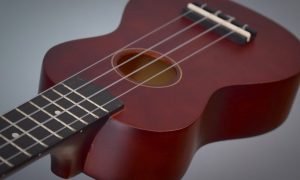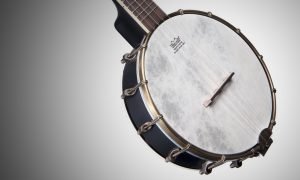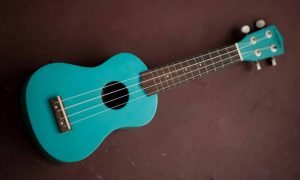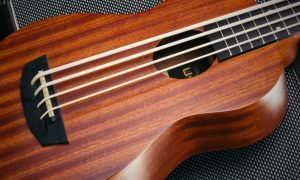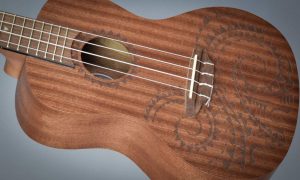Figuring out how to buy a ukulele can be tough.
A quick search for ukuleles on Amazon returns over 1,000 products of different brands, models, sizes and prices.
My ukulele buying guide will show you how to find a good quality ukulele that meets your needs and fits your budget.
In a Hurry?
If you’re short on time, here’s a quick overview of the ukes I recommend in this article. You can also click here to jump right to the “recommended ukuleles” section.
|
|
Lohanu LU-C Concert | 7,810 Reviews | $74.97 | Check Current Price |
|
|
Kala KA-15S Soprano | 4,286 Reviews | $65.00 | Check Current Price |
|
|
Donner DUS-1 Soprano | 5,298 Reviews | $59.99 | Check Current Price |
|
|
Hricane UKS-1 Concert | 755 Reviews | Check Current Price |
|
|
Aklot AKC23 Concert | 9,278 Reviews | $69.99 | Check Current Price |
Pick a Price Range and Body Size
I recommend narrowing your search by first determining your price range and body size. Once you have these two factors nailed down, the rest of your ukulele search will become much easier.
Choose a Price Range
In my experience, most ukes in the $50 to $100 range are reasonably well-made instruments that sound good and are comfortable to play. You can certainly spend more, but it’s not necessary to get a great beginner ukulele.
These are instruments that you can play for a long time without feeling like you need to upgrade. Plus, if you ever move up to a more expensive ukulele, your old uke will make a great backup for camping, travel, or loaning to friends.
What to Expect as You Spend More
What’s the benefit of spending a little more on your first uke? There’s not a single answer to this question, but as you increase your budget you’ll start to see the following:
- Better overall craftsmanship and playability
- Fancy cosmetic features like binding, inlays, and rosettes
- Exotic woods and materials
- Solid wood top, back, and sides (for improved tone)
- Electronics for playing through an amp
At a certain price point, you’ll find yourself in the realm of high-end, US-made ukuleles from companies like Martin or Kamaka. These are some of the best ukes money can buy, but they’re considerably more expensive than mass-produced import products.
Avoid Really Cheap Ukuleles
I know it’s tempting to save a few bucks and buy a ukulele for $25 or $30 online. After all, these cheap ukes often don’t look very different than more expensive ukes, especially in online photos.
Quality Issues With Cheap Ukes
Unfortunately, ukes in this price range are much more likely to have serious issues that can affect tone and make them hard to play.
In my opinion, many very cheap ukes barely qualify as real instruments. And, the cheaper they are, the higher the chance you’ll run into trouble.
Cheap Ukes Aren’t Fun!
Players who purchase ultra-cheap ukuleles often end up frustrated and discouraged. This isn’t how you want to feel when learning a new instrument!
By spending just a little more money, you can get a high-quality beginner uke will be fun to play will motivate you to pick it up and practice more often.
Select a Body Size
Some first-time ukulele buyers are intimidated by the array of sizes. Don’t worry, I promise it’s not that complicated!
Soprano, concert, and tenor ukes are all tuned and played the same way. If you learn on a soprano, you’ll be just fine playing a concert or tenor.
So why bother with different ukulele sizes if they’re all tuned and played the same way? The answer mostly comes down to tone and playability.

How Ukulele Size Affects Tone
As a general rule, a bigger body means a bigger tone. Concert and tenor size ukuleles tend to be warmer, richer, and more resonant than soprano ukes. The larger body sizes also produce more bass and volume.
Sopranos are typically a little quieter and have more of a “tinkly” that is more treble-heavy. This isn’t necessarily a bad thing, but it’s worth thinking about before you buy a ukulele.
How Ukulele Size Affects Playability
Concert and tenor ukuleles have a longer scale length than a soprano.
The scale length is the distance between the nut and the saddle, which are highlighted on the diagram below.
A longer scale means the frets are further apart, giving your fingers have more room to maneuver. This means that concert and tenor ukes can be easier to play for some people because of their longer scale length.
The frets on a soprano can feel a little cramped for some players, especially those with larger hands or thick fingers (like me).
Which Ukulele Size is Best for Beginners?
I think these any of these sizes are fine for a beginner. However, I personally prefer the larger concert and tenor body sizes. I think their richer tone and ease of playability makes them an ideal starting point for most beginners.
However, I don’t want to create the impression that sopranos are “bad.” Many folks love the soprano for its compact size and bright, sparkly tone. Soprano ukes are also less expensive than equivalent concert and tenor ukes.
Don’t Obsess Over Finding the “Best” Size
While it’s good to have a basic understanding of ukulele sizes, it’s important not to obsess over choosing the “right” size. Do a little research, get a uke, and start playing!
It’s also worth mentioning that many players have multiple ukes of different sizes. Once you fall in love with the ukulele, you’ll probably find yourself wanting to expand your collection to include ukes of all sizes.
What Are Baritone Ukuleles?
There’s one other common size called a baritone. It’s a notch up from a tenor and is the largest of the four most common ukulele sizes.
A baritone ukulele has a tuning that’s a little different from a soprano, concert, or tenor. This unique tuning means that baritone ukes aren’t really practical for most standard ukulele music.
Recommended Ukulele Models
Once you’ve narrowed your search by price and body size, it’s time to pick the model.
Below are some of my favorite ukes that fall into the $50 to $100 beginner price range. These models are all good ukuleles that score well on build quality, playability, tone, and customer service.
Amazon Top Sellers: Lohanu LU-C and LU-T
The Lohanu LU-C and LU-T are the highest-rated, best-selling concert and tenor ukuleles on Amazon.
This Canadian-based company sells exclusively on Amazon. By cutting out the middle man they can offer impressive package deals at prices that are tough to beat.
The LU-C concert and LU-T tenor both include a gig bag, tuner, extra strings, strap, and picks. Most uke players won’t use the picks, but it’s still a nice thought!
Lohanu’s ukes get glowing reviews for build quality, tone, and ease of play. However, something that really makes them stand out is their lifetime warranty and amazing customer service.
Best Budget Ukes: Kala KA-15S and Donner DUS-1 Soprano
If you’re hoping to save a little money when you buy a ukulele, these ukes from Kala and Donner are worth a look.
The KA-15S is a clear crowd favorite and one of the best budget ukuleles on the market. In my review of the KA-15S, I conclude that it’s a great beginner uke that looks good, sounds great, and is easy to play.
The KA-15S is a perfect choice for beginners seeking a respectable starter uke. It’s also an excellent option for seasoned players looking for an affordable second instrument.
While Donner isn’t as well known as Kala, I think their DUS-1 Soprano is equal to the KA-15S when it comes to build quality, playability, and tone.
When you consider that the Donner includes a gig bag, tuner, and other accessories, it’s arguably the better value of the two models.
Good Value: The Hricane UKS-1 Series
Hricane ukes are among the best-reviewed ukuleles for sale on Amazon.
Like the other models I’ve covered, the Hricane UKS-1 ukes offer nice craftsmanship and playability at an affordable price.
The UKS-1 is available in a soprano, concert, or tenor size and includes a padded gig bag.
Best Beginner Ukuleles With A Solid Top: Aklot AK Series
Aklot makes the most affordable, highest-quality solid top ukuleles I could find. Their basic mahogany-top uke is available in a soprano, concert, and tenor size. All models include a gig bag, tuner, and other accessories.
Why is a solid top important? In general, solid wood produces a warmer, richer tone than laminated wood. The trade-off is that solid wood is more expensive than laminated wood.
Aklot appears to be another company that sells direct to customers through Amazon. This helps keep the price down by avoiding retailer markup.
Cordoba 15CM and Luna Tattoo
These two ukes don’t fit neatly into any category, but I still think they’re good beginner options.
I’ve always felt that Cordoba’s ukuleles were nicely made for the money. I also like that the 15CM has a cool-looking faux abalone rosette and bound fingerboard. These are features you won’t usually find on a ukulele in this price range.
The Luna Tattoo concert ukulele has a unique Hawaiian design laser-etched onto the top. It may not be everybody’s cup of tea, but if you’re looking for something different this uke is worth a look.

You Might Also Like...
-
Ukulele Sizes: The Complete Guide to Different Uke Sizes
Confused about uke sizes? This guide explains the different ukulele sizes (soprano, concert, tenor, baritone) and discusses which sizes are best for beginners.
-
Buying Your First Ukulele: 3 Mistakes to Avoid
A quick list of three common mistakes I see many people make when shopping for their first ukulele.
-
Kala KA-15S Review (2022 Edition)
With hundreds of 5-star reviews on Amazon, the KA-15S is an obvious crowd favorite. But is it the right choice for beginners?

